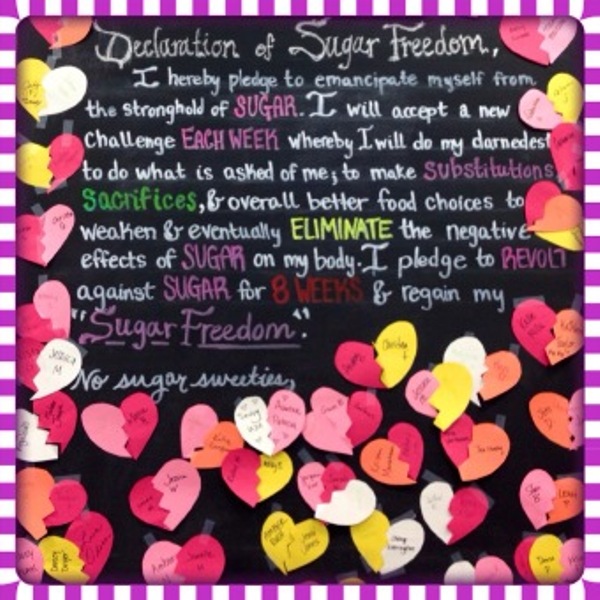
The short answer is no, sugar is not necessarily bad. In proper amounts glucose is converted to energy for our bodies (SWEET)! However, sugar in excess is converted to fat and stored in the body’s fat cells (YUCK)!
The long answer: As we digest food, carbohydrates are converted to glucose (a sugar) which is released into our blood stream.  The pancreas detects it entering the blood stream and sends off a hormone called insulin to deal with it. Insulin helps our body use the glucose right away as energy, or converts it to stores of energy (glycogen) or stores of fat. Our bodies have a limited capacity for how much can be burned or stored as energy, so any excess gets stored as fat.
The pancreas detects it entering the blood stream and sends off a hormone called insulin to deal with it. Insulin helps our body use the glucose right away as energy, or converts it to stores of energy (glycogen) or stores of fat. Our bodies have a limited capacity for how much can be burned or stored as energy, so any excess gets stored as fat.
Besides adding to the body’s fat stores, consuming too much sugar also wears down your body’s ability to regulate blood sugar levels. The more sugar you consume, the more insulin is produced. Eventually, the body will produce more insulin than is needed, storing away more glucose than it should, so there isn’t enough readily available as energy. This is known as hypoglycemia or a “sugar crash,” and indicates to your body that it needs MORE sugar. When you give it more sugar, more insulin is produced, and the cycle continues…storing more and more glucose into fat!
Sugar is a carbohydrate and goes by many names (most of which end in “-ose”). Sugars can be broken into 2 groups: simple and complex.
Simple sugars include glucose, fructose, and galactose, while complex sugars include sucrose, maltose, and lactose. Both glucose and fructose, as well as sucrose and lactose are naturally occurring.
We’ve established that our bodies do need a certain amount of sugar, but most of us have much more than we need. Almost all carbohydrates are converted to glucose during digestion, and our bodies can actually produce glucose when needed. According to the USDA, Americans consume 156 pounds of sugar per year, on a per capita basis, and that doesn’t include naturally occurring sugar! This extreme excess, of course, gets stored as fat. But more than that, sugar has been linked to a host of other health issues, including diabetes, obesity, dementia, cardiovascular disease, renal failure, high- blood pressure, and the list continues.
Our goal with this challenge is to make you more aware of the foods that you eat that contain sugar. 156 pounds per year is a pretty staggering number, and indicates that a lot more products than you might think actually contain added sugar. Let’s see if we can eliminate at least a few of the guilty culprits. We’ll take it one week at a time.
The consumption of fruit has been greatly debated. On the one hand, fruit, especially certain kinds, contain a large amount of sugar. On the other hand, fruit is an excellent source of many vitamins and antioxidants the body needs. With this challenge, we’re saying fruit is OK, in moderation (i.e. 2 servings per day). Also, consume MOST of your fruits from those with a low glycemic index (see below). The glycemic index assigns a number (1-100) to foods depending on how quickly blood sugar rises after consuming that food. Finally, limit dried fruits. Most contained added sugars and preservatives, and even those that don’t have lost some of their nutritive value during the drying process.
[table colalign="left|left|left"]
Agave nectar, Evaporated cane juice, Lactose
Brown sugar, Organic evaporated cane juice, Maltose
Cane crystals, Fructose, Malt syrup
Cane sugar, Fruit juice concentrates, Molasses
Corn sweetener, Glucose, Raw Sugar
Corn syrup, High fructose corn syrup, Sucrose
Crystalline fructose, Honey, Sugar
Dextrose, Invert sugar, Syrup
[/table]